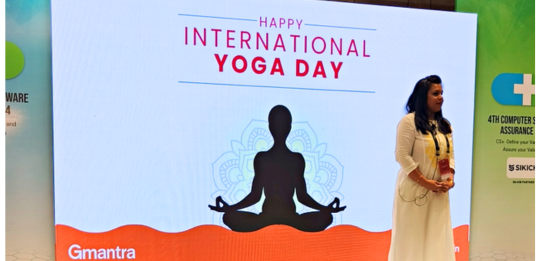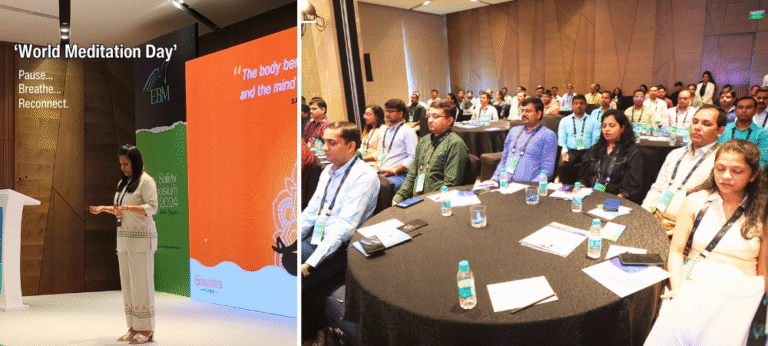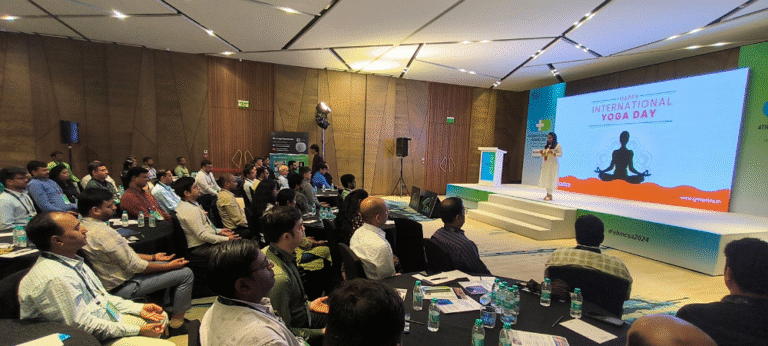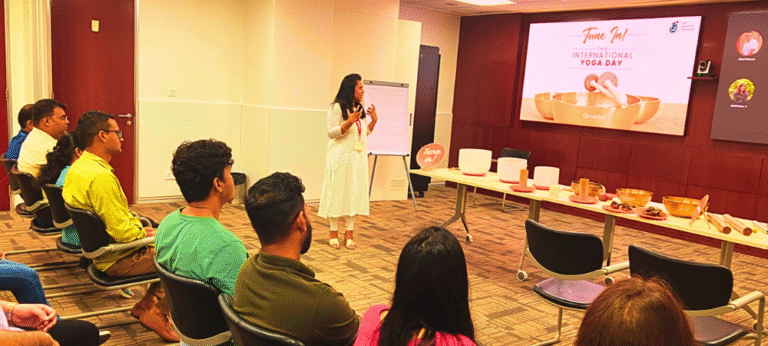Every year, June 21st – International Yoga Day – offers us a beautiful pause in the noise of our daily lives. It reminds us not just to stretch our bodies, but to stretch our awareness — inward.
Most people associate yoga with movement — flowing through asanas, balancing in tricky poses, and improving flexibility. But yoga, in its truest sense, goes far beyond the physical.
The word Yoga comes from the Sanskrit root ‘yuj’, which means to unite. It is a union of the body, breath, and mind — and ultimately, a reconnection to oneself.
In today’s hyper-connected world where we are constantly wired to devices, deadlines, and distractions, we often forget to plug into the most important connection of all — our inner self. And that’s where sound meditation comes in.
The Role of Sound in Stillness
In the last few years, I’ve had the privilege of facilitating Sound Meditation sessions across various spaces — especially during International Yoga Day. From corporate boardrooms to open studios, I’ve seen how powerful sound can be in helping people discover silence.
Unlike traditional seated meditation, where one might struggle with thoughts, sound works gently but deeply. Instruments like singing bowls, gongs, chimes, and ocean drums emit frequencies that bypass mental resistance and speak directly to the nervous system. The result? A state of deep rest, clarity, and calm.
It’s a gentle gateway into meditation — even for those who believe they “can’t meditate.”
Yoga Day with Ajanta Pharma
In 2024 , I had the opportunity to curate and facilitate multiple sessions for Ajanta Pharma — one of the leading pharmaceutical companies in India. What stood out was their holistic approach to wellness — extending Yoga Day beyond just physical activity.
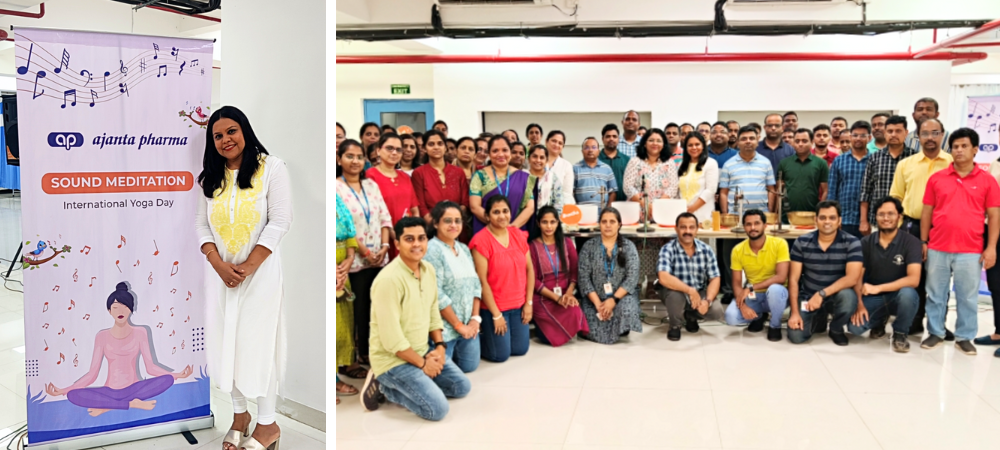
Ajanta celebrated Yoga Day not only in their corporate office but also for their research scientists. Over a series of sound meditation sessions across departments, participants were introduced to the art of deep listening and relaxation. The feedback was heartfelt — many shared how they felt a sense of calm they hadn’t experienced in months.
For the researchers and teams working in high-pressure environments, the session was like hitting a reset button.
A short pause.
A long exhale.
It’s inspiring to see organizations like Ajanta Pharma invest in the mental and emotional wellness of their people — especially on a day that celebrates the mind-body union.
How a Sound Meditation Session is Curated
No two sessions are ever the same — because no two groups are the same.
Each sound meditation session I facilitate is intentionally designed. Here’s a brief look at the process:
- Understanding the Audience
I begin by understanding the nature of the group — Are they first-timers? High-stress professionals? Creatives? This helps me choose the tone and flow of the session. - Setting the Intention
Every session has a subtle theme — whether it’s grounding, clarity, release, or inner connection. The instruments and rhythm are chosen accordingly. - The Journey Begins
We usually start with a short mindfulness body scan to help everyone settle into the present moment. Then, I begin layering sounds — from gentle chimes to deep gong vibrations, slowly guiding participants into a meditative state. - The Return
After about 30–40 minutes of immersive sound, I gently guide the group back using soft bells and breathwork. We always end with silence — to let the vibrations settle. - Sharing Circle (Optional)
If time permits, we open up space for reflections — and some of the insights people share are truly moving.
Sound meditation isn’t just an experience — it’s a journey inward. One that doesn’t require any effort or prior knowledge. You simply lie down, listen, and let go.
What People Say
Here are just a few things participants often say after a session:
- “I didn’t realize how tired I was until I felt this relaxed.”
- “It felt like my mind got cleaned.”
- “I’ve tried to meditate before, but this was the first time I could actually feel still.”
Even among corporate professionals who are new to any kind of wellness practice, sound creates a non-threatening, welcoming entry point into meditation. It meets them where they are — in a chair, in a busy office, in the middle of their day — and takes them inward.
You Don’t Have to Go to the Himalayas to Meditate
One of the most common myths about meditation is that it requires complete silence, a secluded space, or years of practice. But the truth is — you don’t have to go to the Himalayas to meditate.
Meditation isn’t a place. It’s a practice of presence.
In a fast-paced world, where everything is speeding up, slowing down becomes a superpower. Sound meditation gives people that pause — that moment of stillness they didn’t even know they were craving.
Especially on International Yoga Day, when the world talks about health and balance, offering people an experience of internal silence and harmony feels incredibly aligned with yoga’s deeper purpose.
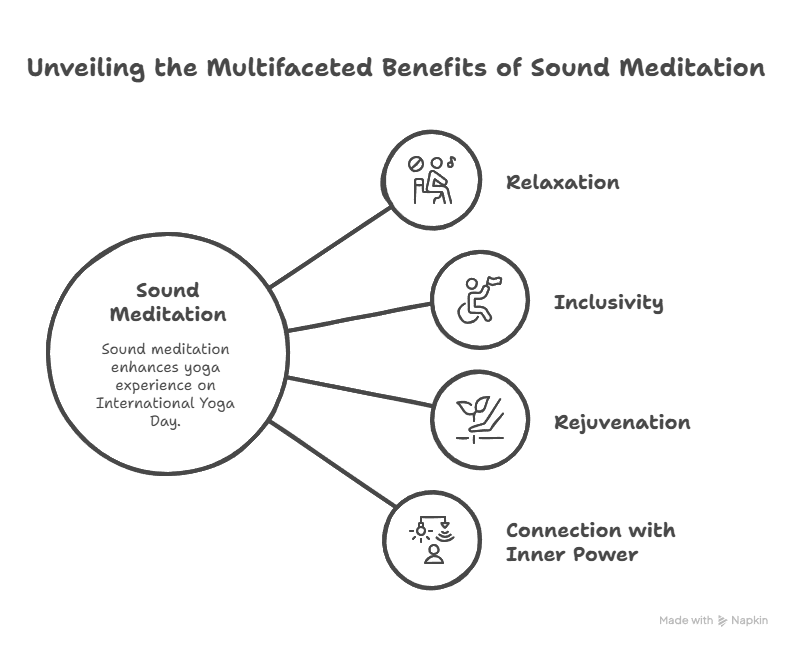
🧘♂️ The True Meaning of Yoga
Yoga is not just about touching your toes — it’s about what you learn on the way down.
It’s about aligning breath and body, yes. But also aligning with your purpose, your inner compass, your own truth.
Yoga Day is a reminder that we are more than our roles, our emails, our achievements.
We are human beings, not just human doings.
And in that space of stillness — even if just for a few moments — we reconnect.
Sound meditation helps us make that connection effortlessly.




